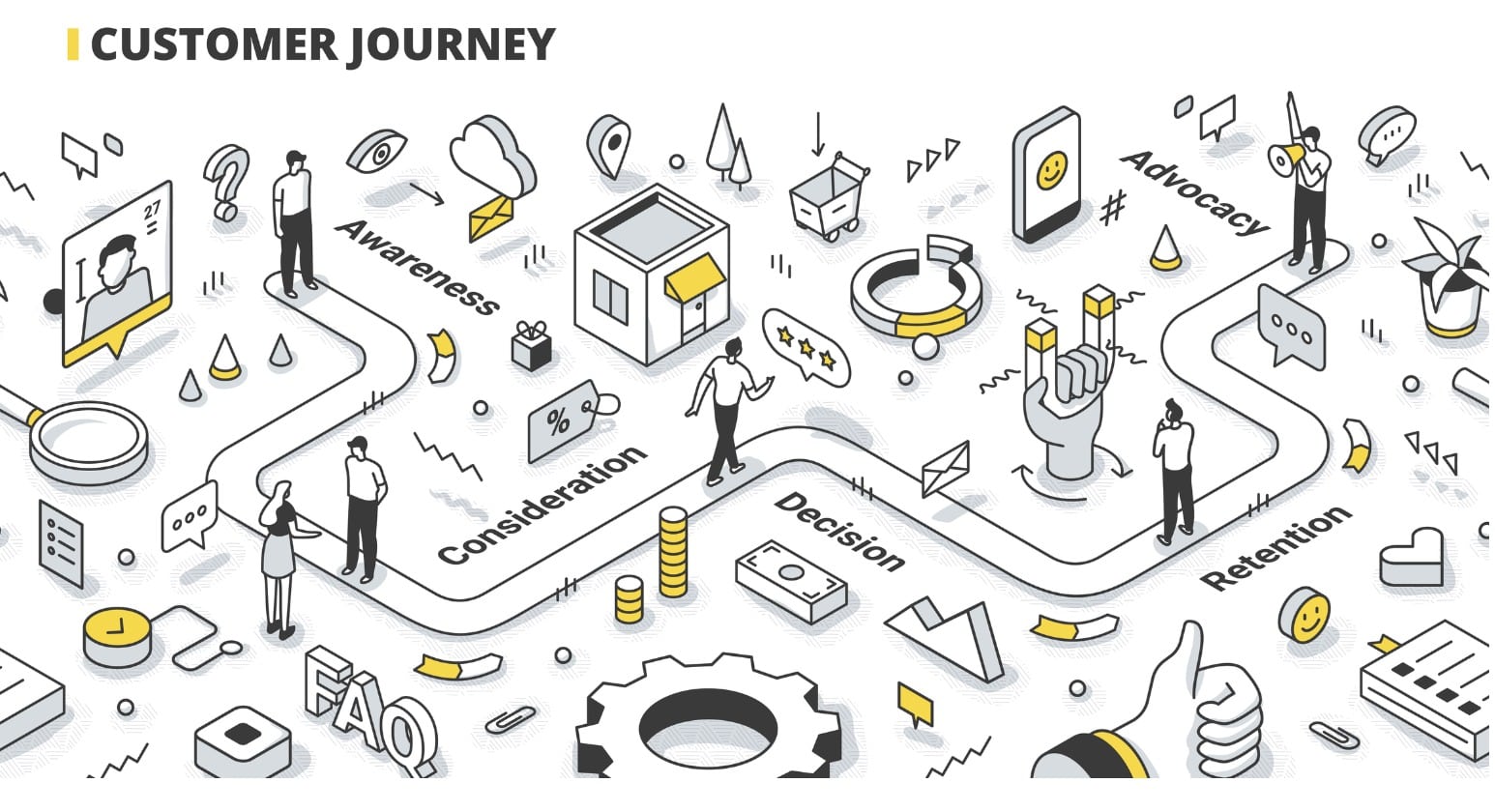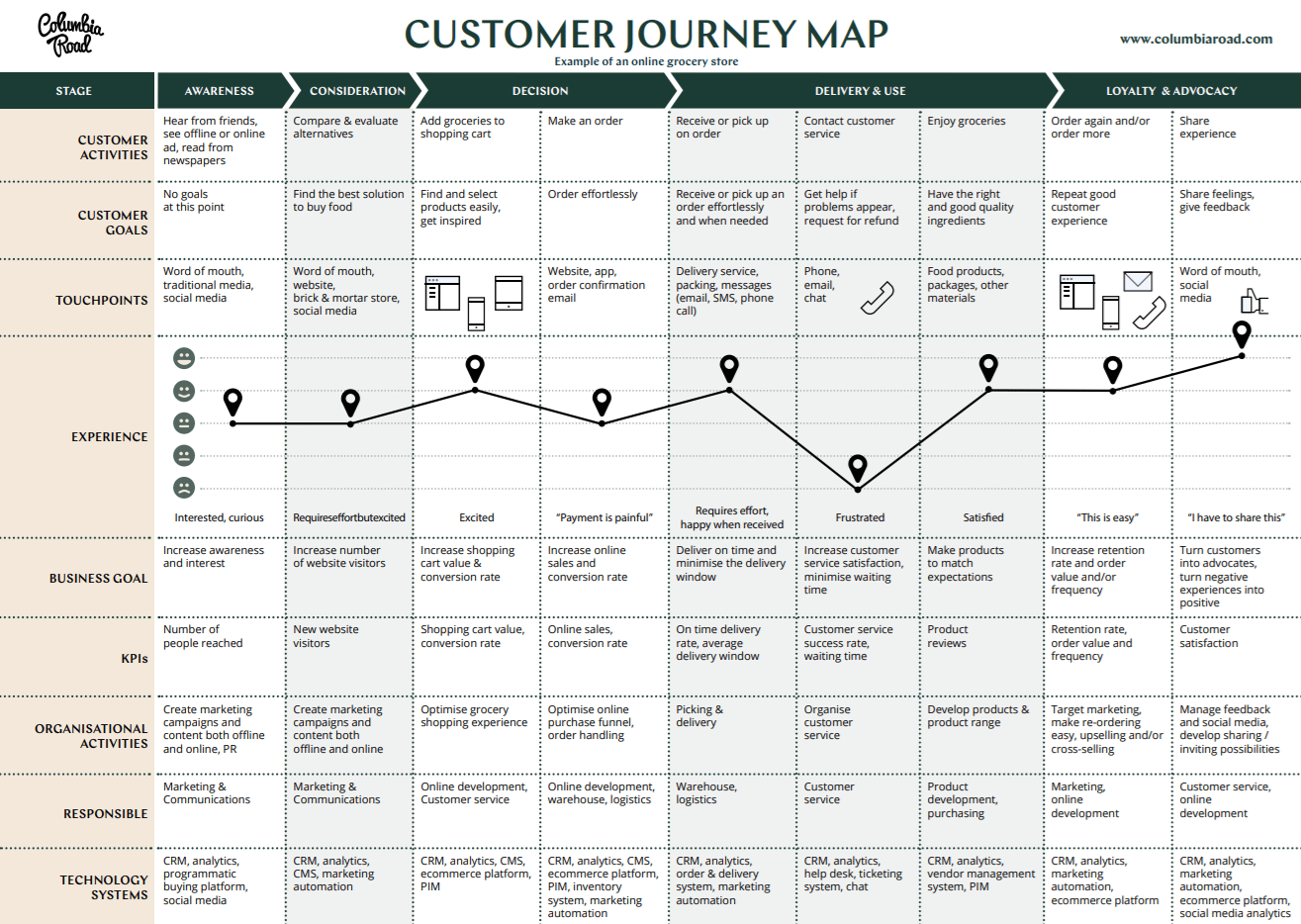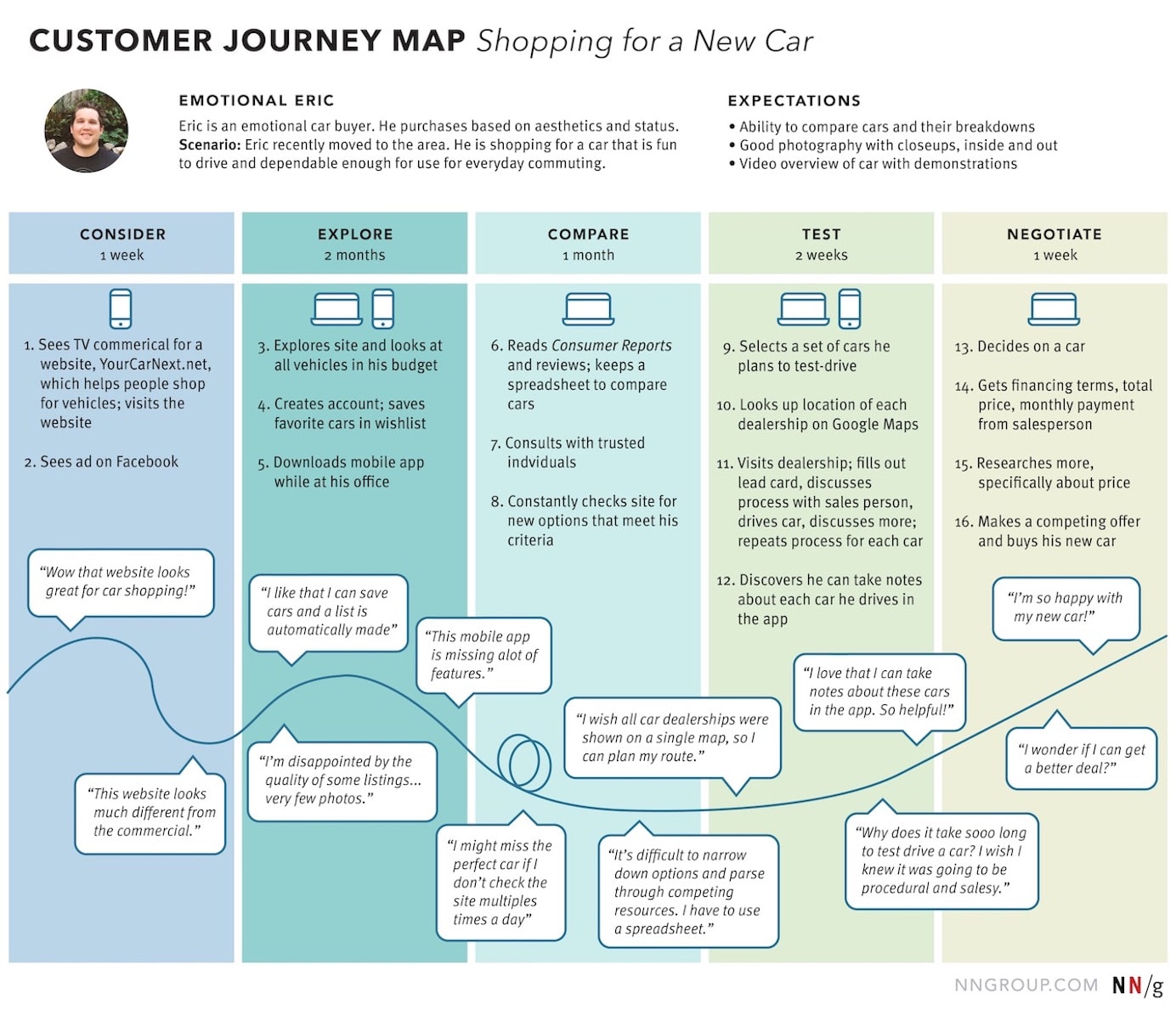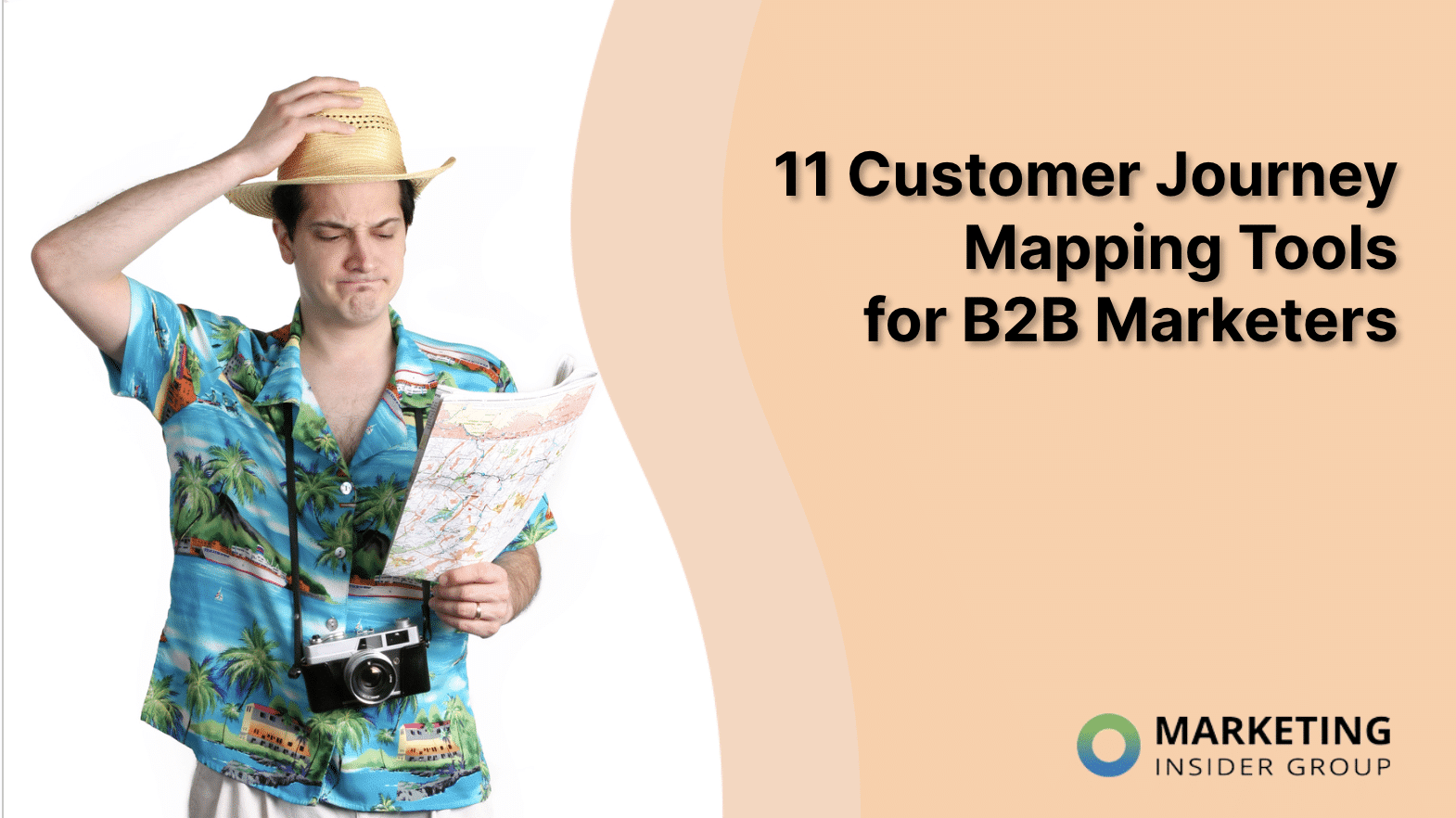
The Why and How of Customer Journey Mapping in Content Marketing
You’ve heard of it before, but why customer journey mapping? What is it? And what benefits does it deliver? Let’s find out.
The great explorers of time’s past set sail without a map to guide them. Today, accurate GPS technology fits in our pockets, directing our journeys from A to B daily. Mapping has come a long way, but it’s not just the wayward traveler that benefits. Businesses, too, should embrace leaps and bounds in mapping. But, instead of plotting a geographical route, they should be using technology to track customers’ experience from awareness all the way to a done deal.
Quick Takeaways:
- Customer journey mapping is essential in the modern-day marketplace because people interact with brands multiple times on a variety of platforms.
- The map is like the funnel — you need customers to keep moving forward.
- Content mapped to the customer journey allows the brand steer conversations rather than reacting to them.
What Is a Customer Journey Map?
A customer journey map is a visual representation of all the experiences your customers have with your brand. It tells a story, beginning with the first engagement and hopefully ending with a long-term, loyal relationship.

At first, a customer journey map might appear simple. The steps toward making a purchase might seem linear – you offer a product your customer wants or needs, they find it, and then buy it. In reality, however, it just doesn’t work that way most of the time.
“Customers experience roadblocks, dead ends and frustration in their journey. The more friction we put in front of potential customers, the less likely they are to complete the journey.” – Forbes
Real customer journeys are less rigid and more choose-your-own-adventure. Prospects might find your brand via a Google search, a Facebook ad, or a real-life billboard. They might engage with your brand in several ways – subscribe to an email newsletter, download an eBook, follow you on Instagram – or not at all before they make a purchase. They’ll most likely visit your website more than once, too.
Why Is Customer Journey Mapping Important for Marketing and Sales?
With the right tools, marketing teams can uncover recurring customer pain points and gain insight into how they can improve the customer experience and ultimately boost conversions. But with so many variables at play, it can be difficult to understand the true customer journey. Instead of making educated guesses, accurate metrics are critical to the mapping process.
“Marketing technology makes it possible to map the customer journey in far more detail than ever before. And a more accurate customer journey map can guide your marketing to be more strategic, better optimized, and ultimately more effective.” – MarketingProfs
Customer experience is crucial – modern-day consumers expect a lot from their interactions with a brand. They anticipate a high level of personalization and relevancy. They expect consistency across channels. They believe their individualized needs should be known, understood, and addressed every step of the way.
A technology-backed customer journey mapping process can address the above and help businesses do the following:
- Identify key interaction points
- Define customer needs at each stage of the sales funnel
- Gain an objective view on the effectiveness of their sales process
- Understand the gaps between the intended customer experience and the one actually delivered
- Determine development priorities
- Allocate expenditure for maximum gains

Customer journey mapping isn’t just for the benefit of marketing and sales teams, either. Content creators, designers, and developers can draw valuable insight from the map. For content creators, a thorough understanding of the customer journey can help them craft copy that’s relevant and timely, as well as give them guidance on where to publish and share finished content. For designers, an appreciation for the context of their work can inform visual and experiential decision-making.
How to Map Your Content to the Customer Journey
Here are four quick steps to map your content to your customer journey and build a top-quality experience for customers.
Step 1: Build the Map
First off, you need to understand the journey, the narrative into which your prospects and leads fit.
Where is the first point of contact between you and your customers? How are you re-engaging customers to minimize churn? How many steps are there between first contact and sale?
Analyze the customer journey, and then map this out as a workflow diagram.
This provides the structure for your content strategy. This map shows you precisely which steps your customers are taking and illustrates the entire process, putting all members of your marketing team on the same page.
Step 2: Identify Friction Points
Next, it is time to identify where your customers are getting stuck.
Track their progress throughout the journey. Are you losing significant numbers of customers at any particular point? Is there a section of your road map that needs to be streamlined?
By analyzing the movement of your customers along the route towards conversion, these questions should be easy to answer.
Even if your operation is already a slick one – even if each section of the customer journey is already optimized for success – there will still be improvements you can make. This is an ongoing process, so keep at it.
Step 3: Craft the Content
With the pain points identified, it is now time to develop content for each stage of the customer journey.
If you have a large email subscriber database but minimal conversions, providing exclusive content to users who follow your email CTAs can help to boost this number.
If your social media channels are not pulling their weight, diversifying your content approach with infographic and video content will optimize this point of contact.
Alternatively, it might be that your search engine results are letting you down. If this is the case, developing inbound marketing efforts with high-quality content that builds your authority in the industry will turn this around.
While this content is not targeted for specific user groups, it still has a big part to play in your customer experience road map.
Step 4: Analyze and Re-Analyze
As was mentioned earlier in this post, building the perfect digital customer experience is an ongoing and endless process.
This means that constant analysis and re-analysis is required if your efforts are to be successful.
If a particular move to ease customers along the journey towards conversion has not been successful, or has not had the desired outcome, you need to know why.
Pore over the data, reach out to customers for feedback, and examine the efforts of similar organizations in your field.
There is always more knowledge to be gained, and arming yourself with the best data gives you a valuable advantage over your competition.
How to Get the Most out of Your Customer Journey Map
You want to shape the best possible experience for your customers, and you know that creating a customer journey map is vital to this objective. Here are a couple of tips to keep in mind as you set forth into un-chartered territory, compass in hand, ready to plot the great unknown.
- Include every single point of possible customer interaction on your map. This means every point of potential exposure to your brand, including things like packaging, magazine adverts, local business directories, social platforms, and so on.
- Overlay quantitative elements from multiple sources, such as website analytics, CRM software, and call center software. This should provide insight into what’s working and when, and what’s causing friction.
- Don’t forget the post-purchase journey. Your relationship with a customer shouldn’t end – ever. Track activities after the conversion to highlight obstacles and opportunities to foster repeat business.
- Take note of how you portray your customer experience and benchmark the reality against any promises you’ve made. For example, many brands claim to provide a seamless experience, something that’s easy and fuss-free, even fun. Look at the words you use to describe not just your product, but the experience a customer can expect when interacting with all of your brand’s assets.

Customer Journey Mapping Safeguards Your Future
Consumers are shifting from offline to online, and so, too, are marketing dollars. Further to this, offline advertising efforts are taking on online dimensions – scannable QR codes and call-to-actions that encourage viewers to download an app, as examples. Digital interactions produce a whole lot of data. And, if a modern-day business is to safeguard its future, it must use this data wisely.
Customer journey mapping is a way to bring disparate sets of data into one place, to produce a story that’s based on emotion but backed by numbers.






